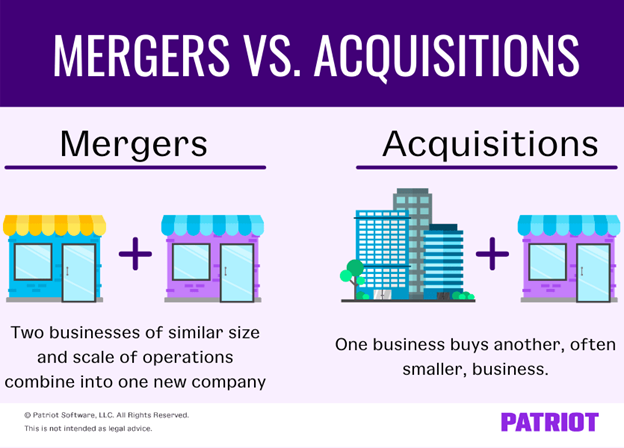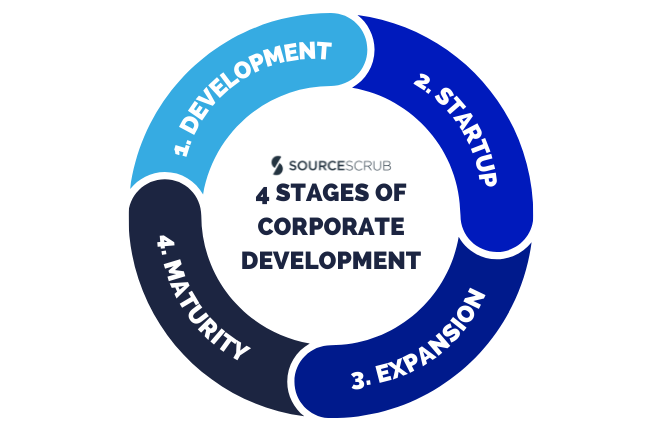
Arguably, the point of business is to grow. While individual companies may start by simply trying to offer a great product or service, the nature of business is to always do (and sell) more. Even business itself is there to stimulate economic growth both in its home country and abroad.
So it should come as no shock that a large portion of a company's effort, time, and budget is dedicated to how to grow and expand. This is called corporate development.
The simplest definition of corporate development as a function is that it's responsible for figuring out how to develop a corporation AKA "grow the company". The focus of CD, though, is on strategic action, not necessarily on the tactical executions that support these strategies, such as co-marketing webinars, for instance. Corporate development teams can take on multiple forms and use different means to get to the same end. Let's first dive into the strategies.
CD is usually achieved through 3 methods: strategic alliances, long-term partnerships, and perhaps the most prevalent, mergers & acquisitions (M&A).
Strategic Alliances
A strategic alliance is when two or more complementary businesses work together toward similar goals appropriate for their business models. This may take the form of two products often sold together, such as hot dogs and hot dog buns. Or it may be a paid advertising firm working with design and writing agencies to complete projects together and refer clients to each other.
The collaboration between Spotify and Uber is an example of a strategic alliance. It's important to note that a corporate development team is largely responsible for the development of such an alliance, but business development team members are the ones who would take on the more tactical projects such as joint marketing events (more on this a bit later).
Long-term Partnerships
Partnerships are a way for companies to do business with one another without having to be in complementary industries. Successful partnerships can reduce or eliminate price wars, and can even block competitors in the market. The importance of CD within these partnerships is to create a path forward for both companies, where potential new customer bases and markets are clearly defined.
Mergers & Acquisitions
M&As are the bread and butter of CD, as well as the preferred strategy for growth, especially for larger companies. M&As can achieve the same results as both strategic alliances and long-term partnerships, and in some cases, result in more rapid growth than otherwise possible.

It should come as no surprise, then, that private equity firms, investment banks, and even venture capitalists focus strongly on CD. When a company is investigating a possible merger or acquisition, some may opt for hiring a team through one of these third parties rather than creating their own.
As we mentioned earlier, corporate development teams may be structured differently depending on the type of organization they're working for and the situation at hand. Generally, however, they fall into three types: a single, centralized model; a hybrid team, where only a few members are within a single team and external resources are required; and a decentralized structure, where the business sources appropriate members for each situation.
No matter the team structure, however, the responsibilities of a corporate development team are largely the same and require extensive knowledge and experience in investment banking. Their sole focus is on strategic planning for growing the business and navigating the rapidly-changing business landscape.
They do this by both outpacing(or acquiring) competitors and finding new revenue streams. This could include bringing new products to market, partnering with a complementary company, or expanding to new geographies. For most corporate development teams, creating long-lasting growth for the company means spending a large amount of time deal sourcing and managing the entire M&A pipeline.
When considering the idea of CD, it's easy to make the mistake and think of "business development." After all, "corporation" and "business" are often used interchangeably. That said, the two teams are different, both in their structure and responsibilities. As stated earlier, CD is focused on the large, strategic actions of the business. Business development, however, is responsible for smaller, more tactical market ventures such as lead generation, vendor management, and marketing.
Think of it this way: when considering a strategic alliance between a real estate agency and a housing developer, corporate development finds and fosters the relationship between the two companies. Once this strategic alliance is secured, business development would then take over the day-to-day, such as producing co-branded events and materials.
When discussing the stages of corporate development, the stages themselves do not refer to those followed during a single M&A deal or when striking up a new partnership. Instead, these stages define business growth as a whole, from the inception of a company through to its maturation and, in some cases, redevelopment. Only during certain stages in business growth do formal corporate development teams exist and use their preferred strategies to grow the business.

Companies looking to build their own CD function can start by either hiring individual members to start a team, building a team from the employees they already have, or hiring a third-party agency. Regardless of the chosen team structure, however, determining the strategy appropriate for the business and then sourcing the right deals is key to successful corporate development.
Using the latest advancements in private company data and deal sourcing technology, Datasite was able to launch an entire corporate development strategy in just 6 weeks! To learn more about how they did (and you can too!), check out this success story.